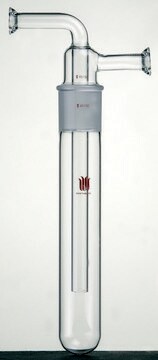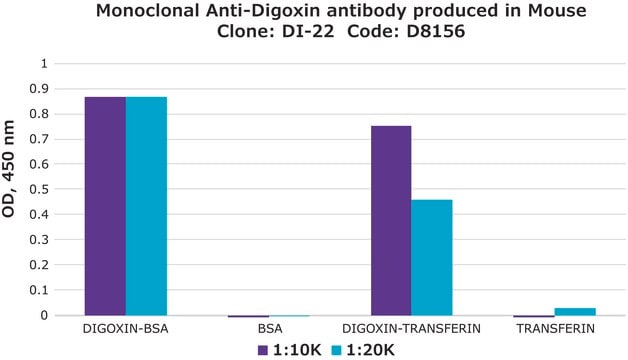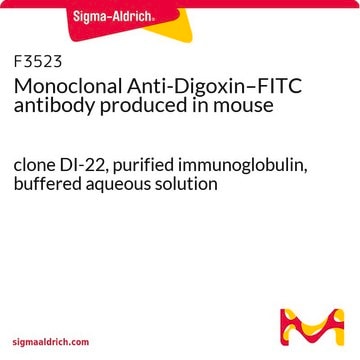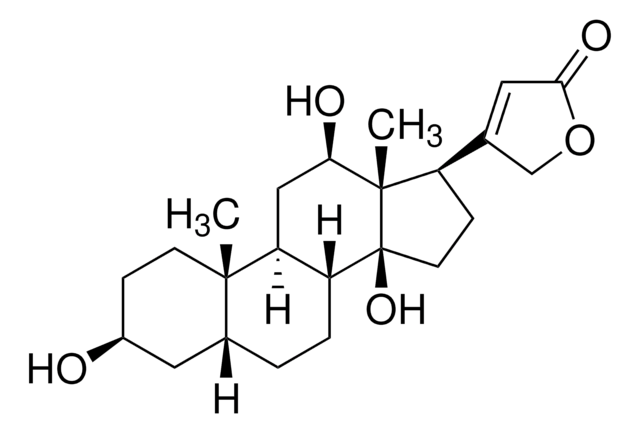11333062910
Roche
Anti-Digoxigenin
from mouse IgG1κ (clone 1.71.256)
Synonym(s):
anti-digoxigenin, digoxigenin
About This Item
Recommended Products
biological source
mouse
Quality Level
conjugate
unconjugated
antibody form
purified immunoglobulin
antibody product type
primary antibodies
clone
clone 1.71.256, monoclonal
form
lyophilized
packaging
pkg of 100 μg
manufacturer/tradename
Roche
technique(s)
ELISA: 2-4 μg/mL
immunocytochemistry: 0.5-2 μg/mL
immunohistochemistry: 0.5-2 μg/mL
western blot: 0.5-2 μg/mL
isotype
IgG1κ
storage temp.
2-8°C
General description
Specificity
Application
- ELISA
- Immunohistocytochemistry
- In situ hybridization
- Western blot
- Immunofluorescence staining
- FISH (fluorescent in situ hybridization)
Biochem/physiol Actions
Features and Benefits
- Specific to free and bound digoxigenin
- The antibody is not stabilized with protein and therefore suitable as coating antibody in Sandwich-ELISAs and for labeling procedures. For example it can be conjugated with enzymes or fluorescence dyes for direct detection of digoxigenin-labeled samples.
Preparation Note
- ELISA: for coating: 2 to 4 μg/ml
- Immunohistocytochemistry: 0.5 to 2 μg/ml
- In situ hybridization: 0.2 to 0.4 μg/ml
- Western blot: 0.5 to 2 μg/ml
Working solution: For coating applications
phosphate buffered saline, pH 7.4
Reconstitution
Storage and Stability
Analysis Note
Other Notes
Not finding the right product?
Try our Product Selector Tool.
Signal Word
Warning
Hazard Statements
Precautionary Statements
Hazard Classifications
Skin Sens. 1
Storage Class Code
11 - Combustible Solids
WGK
WGK 3
Flash Point(F)
does not flash
Flash Point(C)
does not flash
Certificates of Analysis (COA)
Search for Certificates of Analysis (COA) by entering the products Lot/Batch Number. Lot and Batch Numbers can be found on a product’s label following the words ‘Lot’ or ‘Batch’.
Already Own This Product?
Find documentation for the products that you have recently purchased in the Document Library.
Customers Also Viewed
Articles
Digoxigenin (DIG) labeling methods and kits for DNA and RNA DIG probes, random primed DNA labeling, nick translation labeling, 5’ and 3’ oligonucleotide end-labeling.
Our team of scientists has experience in all areas of research including Life Science, Material Science, Chemical Synthesis, Chromatography, Analytical and many others.
Contact Technical Service














